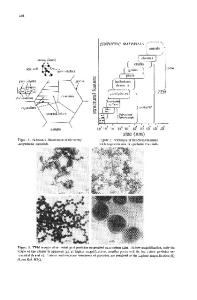Hierarchically Structured Conjugated Polymers
- PDF / 1,087,106 Bytes
- 9 Pages / 612 x 792 pts (letter) Page_size
- 89 Downloads / 348 Views
1236-SS09-06
Hierarchically Structured Conjugated Polymers Holger Frauenrath École Polytechnique Fédérale de Lausanne (EPFL) Laboratory of Macromolecular and Organic Materials (LMOM) EPFL – STI – IMX – LMOM, Station 12, 1015 Lausanne, Switzerland ABSTRACT Functional carbonaceous materials, organic electronic materials, and polymer materials which “speak the language” of biomaterials in their propensity for hierarchical structure formation play a central role in current materials science research. In this context, we prepared hierarchically structured conjugated polymers from diacetylene macromonomers based on β-sheet-forming oligopeptide-polymer conjugates as supramolecular building blocks. The monomers gave rise to supramolecular aggregates with a finite number of strands, a uniform diameter of a few nanometers, and defined superstructures. Their conversion into conjugated polymers under retention of their previously assembled hierarchical structures, led to poly(diacetylene)s with multiple-helical quaternary structures and a rich folding behavior. The diacetylene macromonomers thereby served as a model system to improve our understanding of the selective placement of hydrogen-bonding sites in order to control reactive molecular precursors for the preparation of hierarchically structured organic materials. INTRODUCTION Biomaterials such as silk or wood exhibit extraordinary properties, which is especially remarkable as they are produced under physiological conditions. These properties arise, to some extent, from the fact that biopolymers typically exhibit structure and order on different length scales. Biological systems achieve this kind of hierarchical structure formation utilizing a combined “bottom-up” and “top-down” approach.1 Thus, the constituting macromolecules have the information to adopt structures of higher order encoded in their molecular structure and are, thus, designed to self-organize into precursor materials. The latter are thereafter converted into the final materials with the aid of sophisticated processing procedures, guiding the system to find the desired structure among energetically similar alternatives. Accordingly, the preparation of hierarchically structured synthetic polymers has been recognized as an important field of research.2-5 For hierarchically structured synthetic polymers, important lessons can be learned from silk materials, which represent a unique family of structural proteins that have been harvested for centuries from silkworm cocoons in order to produce textiles and suture materials.6-12 The mechanical properties of the silk threads are extraordinary in terms of strength and toughness. While certain structural details of silk materials remain a matter of debate, it seems to be generally accepted that the origin of these remarkable properties is the nanoscopic structure arising from both the molecular structure of the silk proteins and the applied spinning process. The silk proteins contain repetitive sequences of glycine- and L-proline-rich soft segments as well as well-d
Data Loading...











